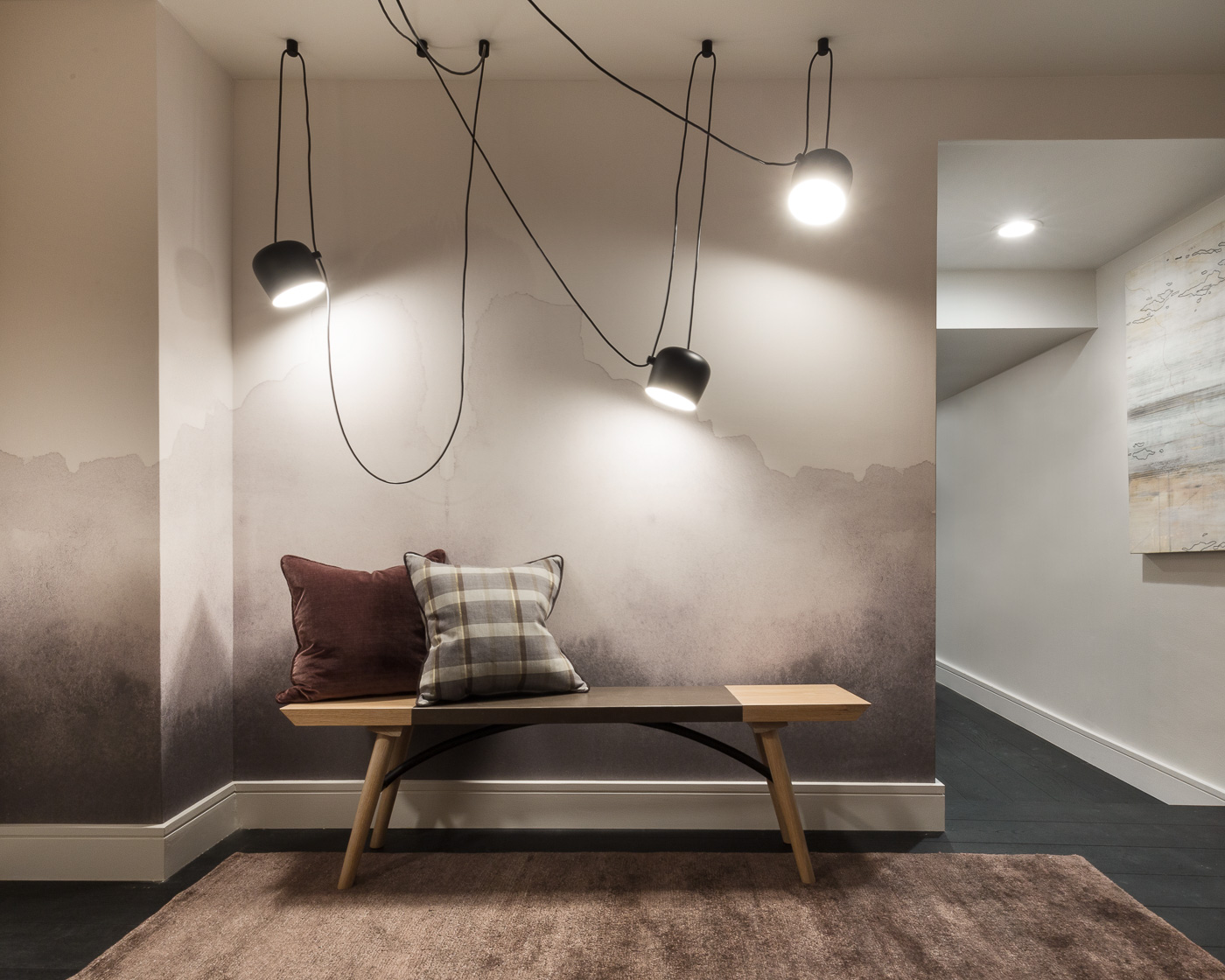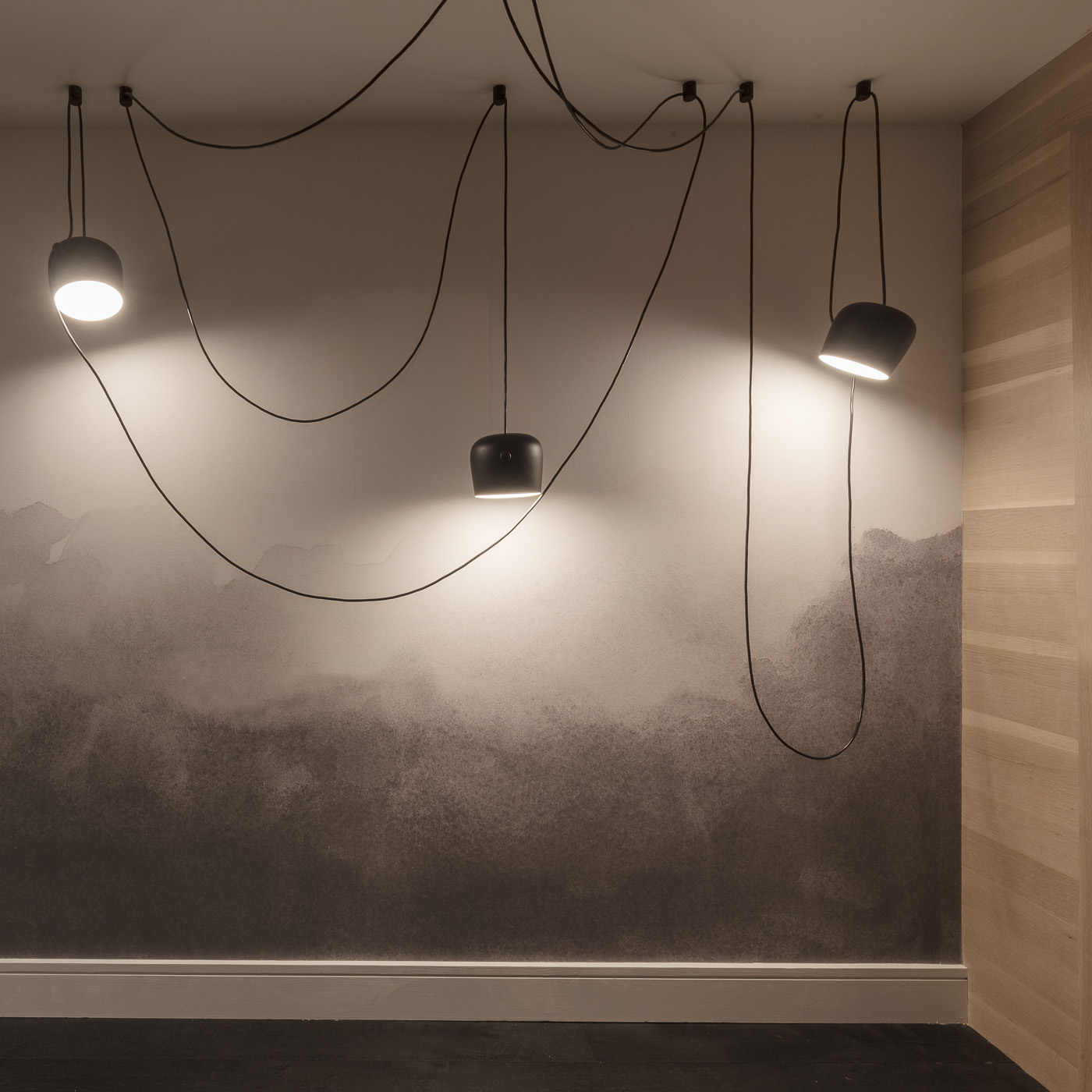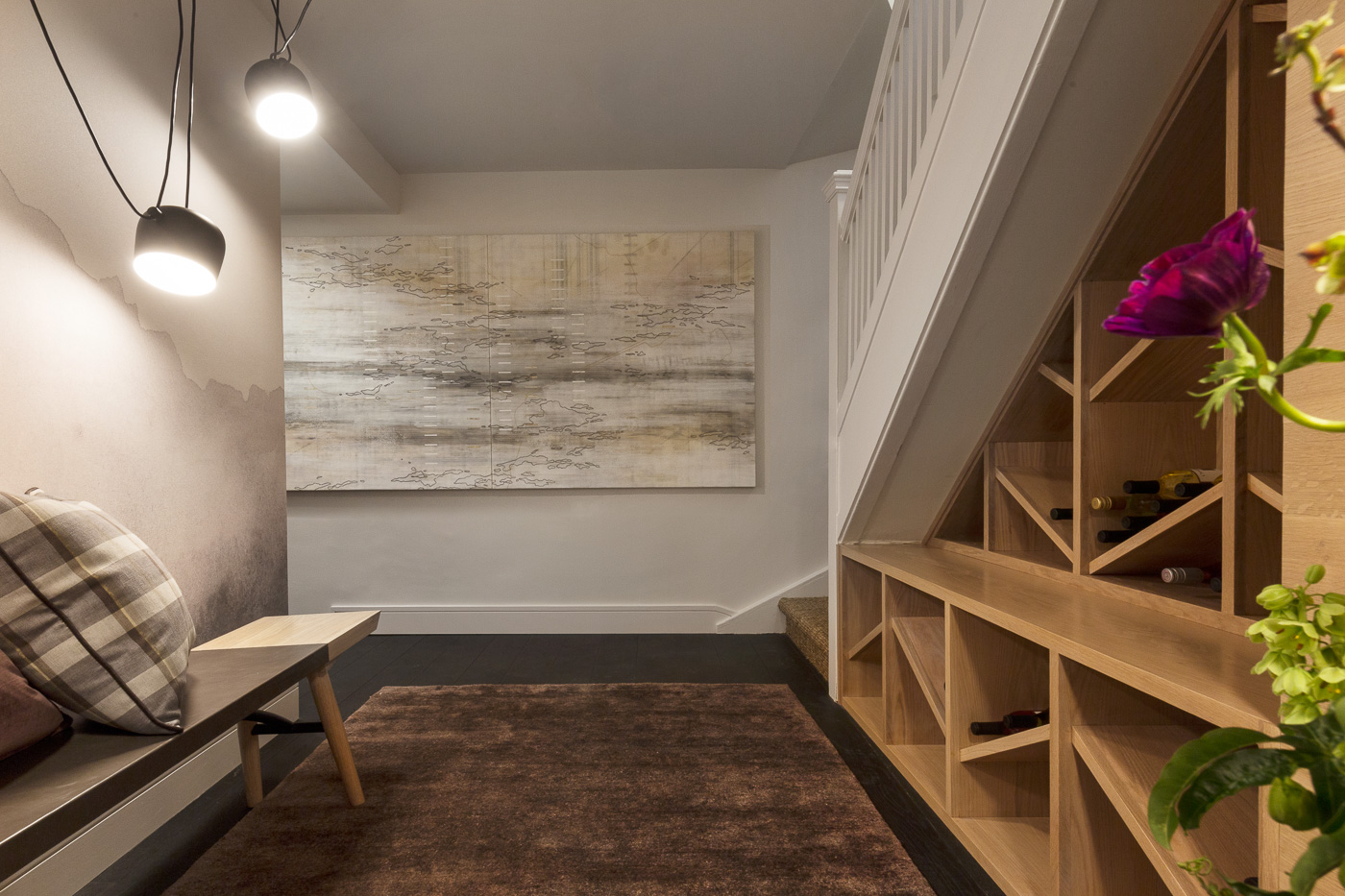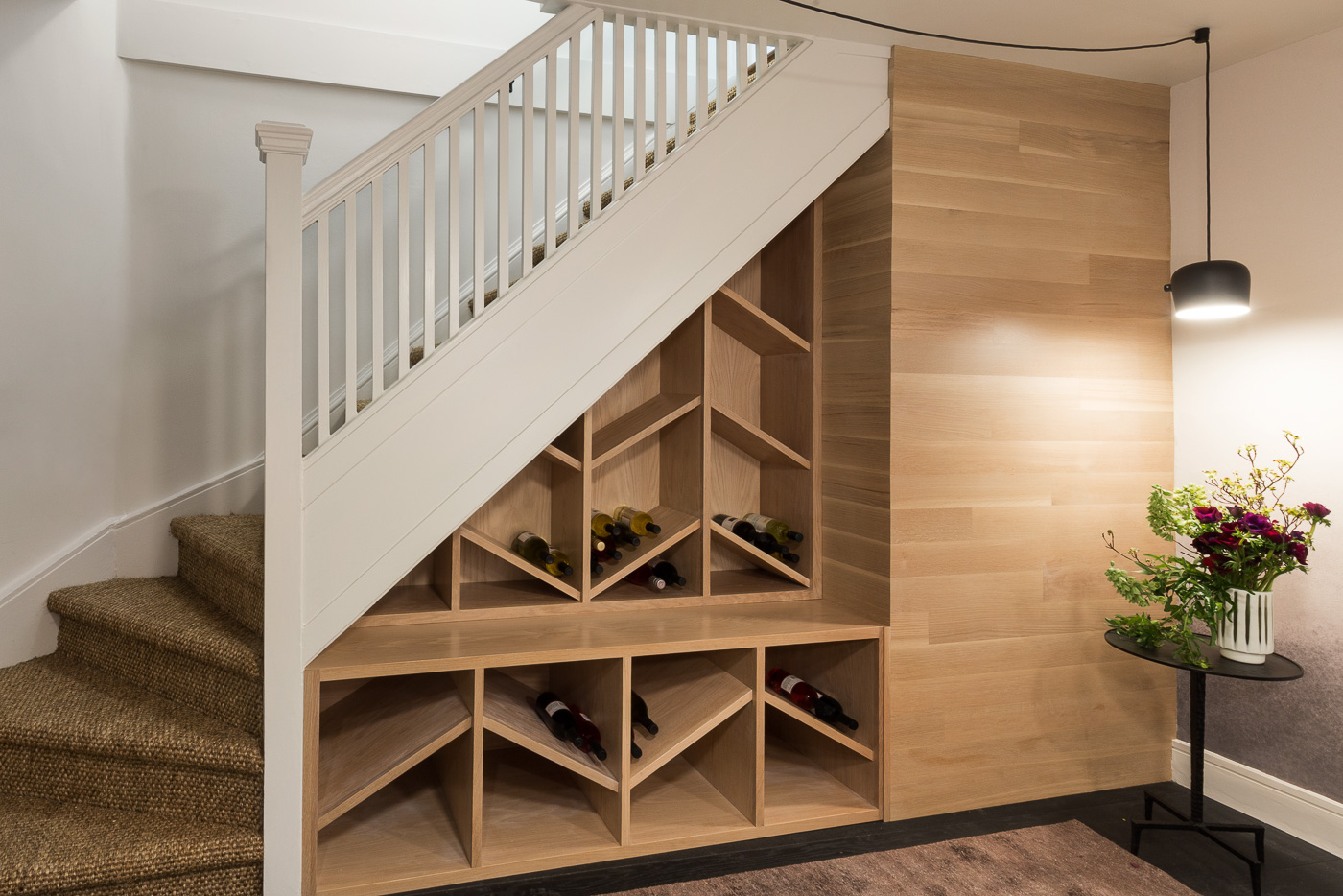




2018 San Francisco Decorator ShowcasE
in-house Wine Grotto
Photographer: David Duncan Livingston
For the 2018 San Francisco Decorator Showcase, a unique transitional space was transformed into an homage to the iconic fog of San Francisco. Embracing the room's inherent darkness, the design featured hand-painted wallpaper enveloping the area in misty hues and patterns reminiscent of the city's legendary fog. This artistic backdrop set the stage for a meticulously curated blend of functional art and design elements tailored to the sophisticated tastes of a wine collector.
Central to the space was a striking light fixture, ingeniously hung to serve not only as illumination but as a captivating art installation, enhancing the room's intimate atmosphere. Custom woodwork was integrated beneath the staircase, creating an elegant wine shelving system that married practicality with the room's aesthetic theme.
A standout art piece, an encaustic work inspired by the Bay Area's tide pools, adorned one wall. This piece intricately combined beeswax, photographic elements, and references to local architecture, layered to create a depth that mirrored the complexity of the city's landscape. The artist's technique of embedding imagery beneath translucent wax evoked the fluidity and ephemeral nature of San Francisco's coastal environment.
Further enhancing the space, a tile installation by Forest Lesch-Middleton FLM Ceramics featured handcrafted, hand-painted tiles inspired by sound wave patterns. This innovative approach, rooted in Renaissance science, transformed auditory vibrations into visual art, embodying the fusion of old-world craftsmanship with contemporary design.
Furnishings and accents, including a rug by The Rug Company, textiles by Brooklyn-based designer Lauren Hwang, and a leather-wrapped bench, complemented the room's rich palette and textures. Each piece was chosen for its ability to contribute to the space's narrative, creating a setting that was both a tribute to San Francisco's natural beauty and a reflection of modern design sensibilities. This transitional space became a testament to the power of design to encapsulate the essence of a place, blending tradition with innovation in a celebration of the city's cultural heritage.